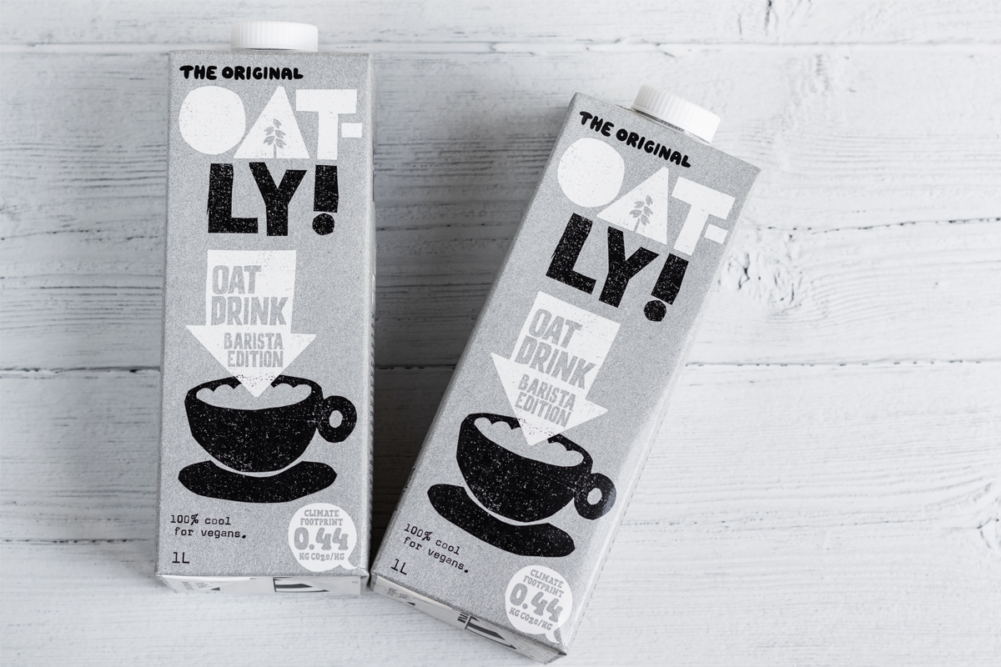NEW YORK – It has been a year since Oatly Group AB, Malmo, Sweden, went public. Its initial public offering was priced at $17 per share and opened at $22.12 per share, on May 20, 2021, giving the oat-milk maker a valuation of $13 billion. But after seeing its stock rise to a high of $28.73 per share on July 11, 2021, it has, for the most part, been a downhill ride.
On May 26, Oatly’s stock was trading in a range of $3.65 to $4 per share and the company’s valuation was $2.3 billion. The problem, according to Toni Petersson, chief executive officer? Not enough capacity to meet demand.
“This is 100% on supply,” said Mr. Petersson, during a May 25 presentation at the Cowen Future of the Consumer: Sustainable Growth for a New Ecosystem Conference. “The lack of supply has been a story for us for so many years, because demand is absolutely massive.”
The supply problem has disrupted the company’s ability to get its products on retail shelves in the United States. Its fill rate ranges between 60% and 70% in an industry where the commitment is 98.7%.
In March 2021, Oatly entered into an agreement to supply its oat milk to Starbucks Corp. stores in the United States. Unfortunately, demand outstripped production capacity and a second manufacturer had to be brought in.
“The truth is there is not one supplier in this country that could supply the demand of oat milk,” Mr. Petersson said. “The capacity doesn't exist.”
Oatly is in the process of scaling global production from three plants with the capacity to produce 300 million liters in 2020 to 9 plants with the capacity to produce 1.3 billion liters. But adding such scale in a pandemic that has disrupted labor pools and supply chains around the world has come at a cost. In the first quarter of fiscal 2022, ended March 31, Oatly sustained a loss of $87.5 million, more than double the loss of $38.4 million in the first quarter of 2021. Net sales were $166.2 million, up 19% from $140.1 million a year earlier.
The company’s gross profit in the first quarter was $15.8 million, down 62% from $41.9 million in the first quarter of 2021.
“In the first quarter we had all kinds of headwinds like COVID, and we were only utilizing our new facilities at 30%,” said Christian Hanke, chief financial officer. He added that as operations shift from scaling up to full production he anticipates results, particularly margins, will improve.
Looking ahead, Mr. Petersson indicated that he envisions a day when the discussion isn’t about conventional milk versus oat milk.
“I think it’s going to be about better milk,” he said. “Something that addresses environmental issues and some of the bigger health issues around the world like non-communicable diseases like heart health, diabetes and obesity. That is what we are driving and putting enormous amounts of resources behind in our science, human health, the oat genome and oat fractions to build the next generation of products.”
The company also plans to expand the oat-based applications it offers.
“We can make cream cheese, we can make yogurts, we can make frozen items, all of that, when the time is right,” he said. “In Sweden we have the full range of products … that represents a little more than 30% of our sales (in the region).”
During a conference call with financial analysts earlier this month, Oatly iterated its guidance for fiscal 2022 of $880 million to $920 million in sales (up 37% to 43% from 2021), capital expenditures of $400 million to $500 million and a run-rate production capacity of about 900 million liters of finished product by the end of 2022.




